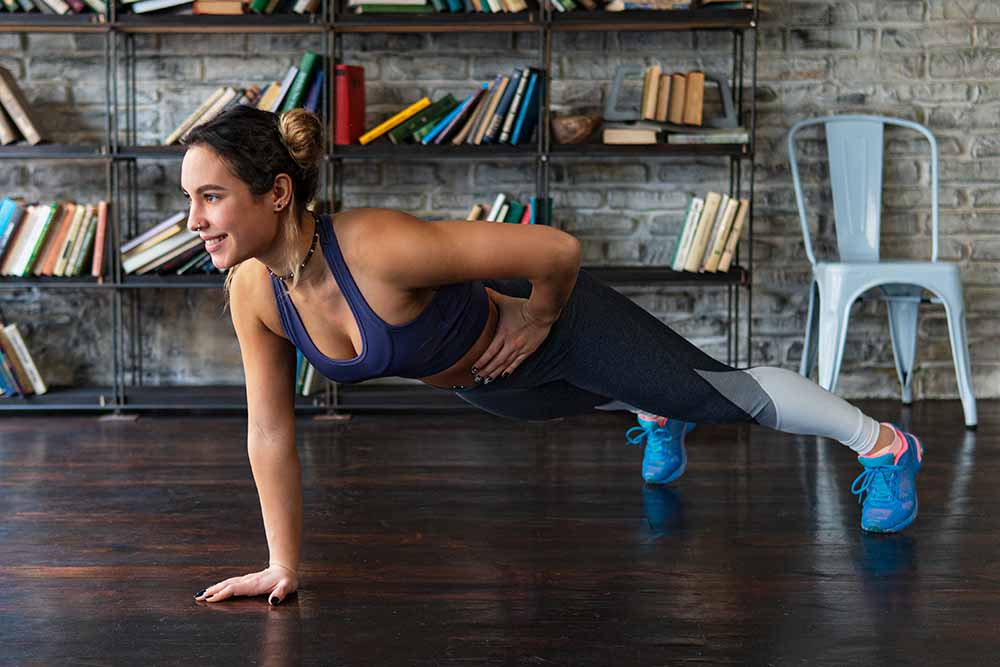Push-ups are a classic bodyweight exercise that targets multiple muscle groups, primarily the chest, shoulders, triceps and core. This versatile exercise requires no equipment and can be performed anywhere, making it an excellent addition to any fitness routine.
Why Push-Ups Must Be Done
Push-ups offer a range of benefits, including building upper body strength, improving core stability, enhancing shoulder health, and engaging multiple muscle groups simultaneously. They also promote functional strength that translates into daily activities.
Standard Technique of Doing Push-Ups
The standard push-up position involves placing your hands slightly wider than shoulder-width apart, keeping your body in a straight line from head to heels, and lowering your chest towards the ground while maintaining a strong core. Push back up to the starting position.
Advanced Technique of Doing Push-Ups
Advanced variations include diamond push-ups (hands close together), wide-grip push-ups (hands wider apart), decline push-ups (feet elevated) and one-arm push-ups (one hand on the back or raised surface). These variations intensify the exercise and target different muscle angles.

Easier Methods to Do Push-Ups
If traditional push-ups are challenging, start with modified versions. Knee push-ups or incline push-ups (hands elevated on a surface) can help build strength gradually and improve your form.
Common Mistakes to Avoid While Doing Push-Ups
Common mistakes include sagging hips, flaring elbows, and allowing your back to arch. Maintain a straight line from head to heels, engage your core and keep your elbows at a 45-degree angle to your body.
Challenges and Progression While Doing Push-Ups
As you master the basics, challenge yourself with variations that match your fitness level. Gradually increase the number of repetitions and experiment with different hand positions for continuous improvement.
Staying Safe and Injury-Free While Doing Push-Ups
Prioritise proper form over quantity. Start with a manageable number of repetitions and gradually increase intensity to avoid strain or injury. If you experience discomfort, consider seeking advice from a fitness professional.
Benefits of Doing Push-Ups
Push-ups offer a range of benefits, including increased upper body and core strength, improved muscle endurance, enhanced posture, and functional strength for everyday activities.
Importance of Doing Push-Ups Regularly
Incorporating push-ups into your routine helps maintain and enhance upper body strength, muscle tone, and overall fitness. Regular practice contributes to long-term health and a well-rounded physique.

Conclusion
Mastering push-ups requires patience, dedication, and a focus on proper form. Whether you're a beginner or aiming for advanced variations, push-ups offer a rewarding journey towards enhanced strength, stability, and overall fitness. By incorporating this foundational exercise into your routine and following the techniques shared in this guide, you're well on your way to achieving push-up perfection and reaping the fitness benefits.
FAQs
Can I do push-ups every day?
While push-ups can be done daily, it's recommended to incorporate rest days to allow your muscles to recover. Alternate push-up sessions with other exercises to prevent overtraining.
Can push-ups help with weight loss?
Push-ups contribute to building muscle, which can increase your resting metabolic rate. While not a primary weight loss method, they play a role in overall fitness and body composition.
How many push-ups should I start with?
Start with a number of repetitions that challenges you without sacrificing proper form. Aim for 3 sets of 8-10 repetitions and gradually increase as your strength improves.